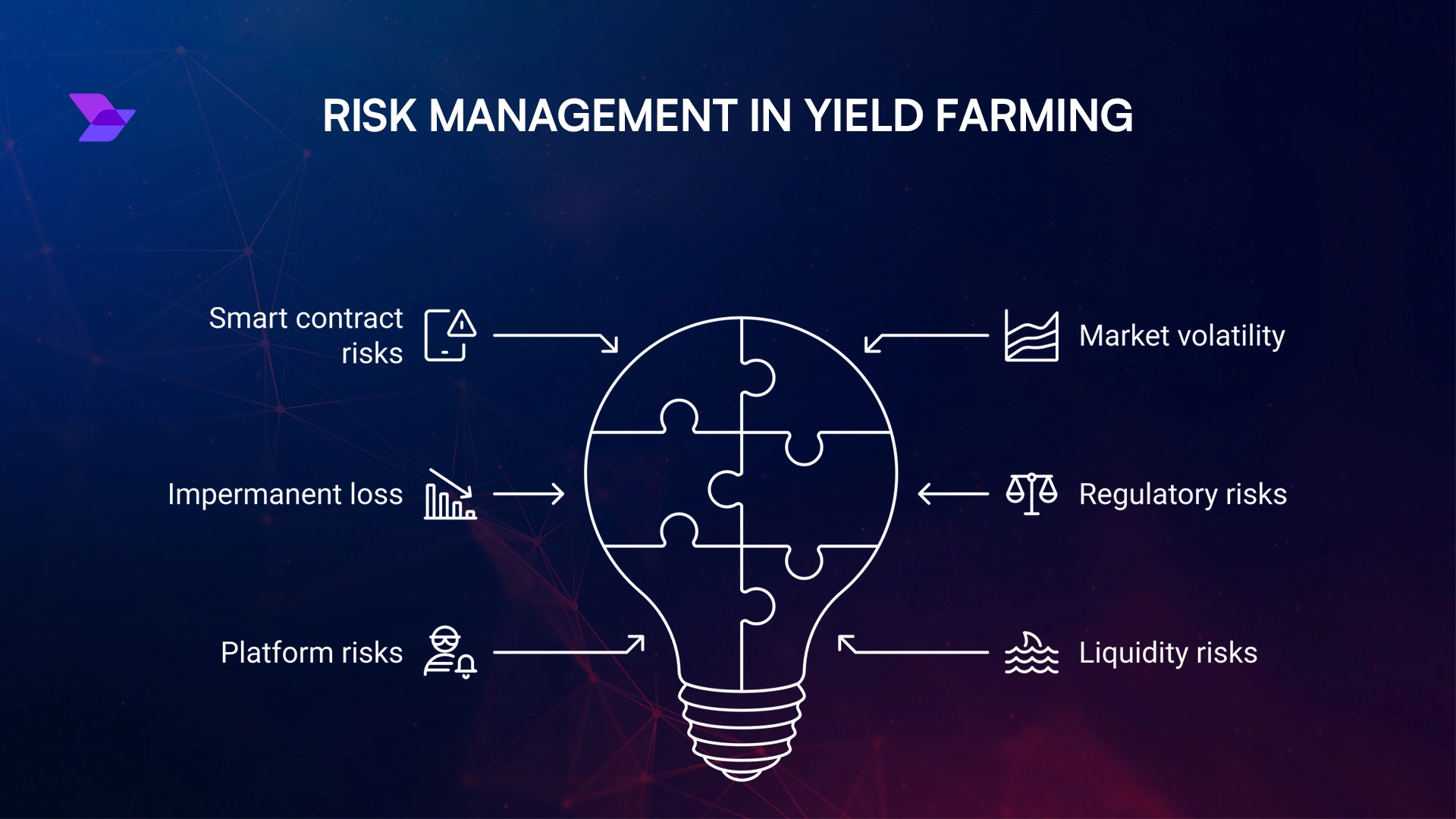When I first started yield farming, I was overwhelmed by the sheer number of liquidity pools available. Which ones were beginner-friendly? Which ones offered the best rewards without too much risk? After some trial and error (and a few costly mistakes), I finally found the pools that worked best for me. In this guide, I’ll share the top liquidity pools for beginners in yield farming, along with tips to help you get started safely and confidently. Whether you’re new to DeFi or just looking for low-risk options, this post will help you navigate the world of yield farming like a pro. Let’s dive in!
Table of Contents
Toggle1. What is Yield Farming and Why Start with Liquidity Pools?
When I first heard about yield farming, I was fascinated by the idea of earning passive income on my crypto. But as a beginner, I was also intimidated by the complexity and risks involved. That’s when I discovered liquidity pools—a simpler, lower-risk way to get started with yield farming.
So, what exactly is yield farming? In simple terms, it’s the process of lending, staking, or providing liquidity to decentralized finance (DeFi) platforms in exchange for rewards. Liquidity pools are a key part of this process. They allow users to deposit tokens into a pool that facilitates trading or lending, and in return, you earn a share of the fees or interest generated by the pool.
Here’s why liquidity pools are ideal for beginners:
- Lower risk: Stablecoin pools, for example, have minimal impermanent loss risk.
- Simplicity: Providing liquidity is straightforward and doesn’t require advanced technical knowledge.
- Steady returns: While the APYs might not be as high as riskier strategies, the returns are more predictable.
I remember my first time providing liquidity to a stablecoin pool on Uniswap. It felt like a safe way to dip my toes into DeFi, and the steady returns gave me the confidence to explore more advanced strategies later.
2. Top Liquidity Pools for Beginners
After testing dozens of pools, I’ve narrowed it down to the top 5 that are perfect for beginners. Here’s my list:
2.1 Stablecoin Pools (e.g., USDT/USDC)
Stablecoin pools are my go-to recommendation for beginners. Since stablecoins are pegged to fiat currencies like the US dollar, their prices are relatively stable, which minimizes impermanent loss risk.
- Popular platforms: Curve Finance, PancakeSwap, and Uniswap.
- APY ranges: Typically between 5% and 15%.
- Pros: Low risk, consistent returns.
- Cons: Lower APY compared to volatile pairs.
I’ve had great experiences with the USDT/USDC pool on Curve Finance. The returns might not be astronomical, but the peace of mind is worth it.
2.2 ETH/Stablecoin Pools (e.g., ETH/USDT)
If you’re comfortable with a bit more risk, ETH/stablecoin pools are a great option. Ethereum is a well-established cryptocurrency, and pairing it with a stablecoin reduces volatility.
- Popular platforms: Uniswap, SushiSwap, and Balancer.
- APY ranges: Typically between 10% and 25%.
- Pros: Higher returns than stablecoin pools, lower risk than volatile pairs.
- Cons: Moderate impermanent loss risk.
I’ve used the ETH/USDT pool on Uniswap, and the returns have been solid. Just be prepared for some price fluctuations.
2.3 BNB/Stablecoin Pools (e.g., BNB/BUSD)
Binance Smart Chain (BSC) is known for its low fees, making it a popular choice for yield farming. BNB/stablecoin pools offer a good balance of risk and reward.
- Popular platforms: PancakeSwap and Venus.
- APY ranges: Typically between 15% and 30%.
- Pros: Low fees, high rewards.
- Cons: Centralization concerns.
I’ve farmed BNB/BUSD on PancakeSwap, and the low fees make it a great option for beginners.
2.4 MATIC/Stablecoin Pools (e.g., MATIC/USDC)
Polygon (MATIC) is a Layer 2 solution that offers fast and cheap transactions, making it ideal for yield farming. MATIC/stablecoin pools are a great way to explore this ecosystem.
- Popular platforms: QuickSwap and Aave.
- APY ranges: Typically between 10% and 20%.
- Pros: Low fees, fast transactions.
- Cons: Smaller ecosystem compared to Ethereum.
I’ve used the MATIC/USDC pool on QuickSwap, and the experience has been smooth and rewarding.
2.5 Single-Sided Liquidity Pools
Single-sided pools allow you to provide liquidity with just one token, minimizing impermanent loss risk. They’re perfect for beginners who want to keep things simple.
- Popular platforms: Bancor and Balancer.
- APY ranges: Typically between 5% and 15%.
- Pros: Minimal impermanent loss, beginner-friendly.
- Cons: Limited platform options.
I’ve used Bancor’s single-sided pools, and the simplicity is a huge plus for beginners.
3. How to Choose the Right Liquidity Pool for You
Choosing the right pool depends on your goals and risk tolerance. Here’s how I approach it:
- Assess your risk tolerance: If you’re risk-averse, start with stablecoin pools. If you’re comfortable with more risk, explore ETH/stablecoin or BNB/stablecoin pools.
- Compare APYs: Higher APYs mean higher rewards, but they often come with higher risks.
- Check platform reputation: Stick to well-known platforms with audited smart contracts.
- Start small: Test the waters with a small investment before committing more funds.
I always recommend starting with stablecoin pools and gradually exploring other options as you gain confidence.
4. Risks of Yield Farming for Beginners
Yield farming isn’t without its risks, and I’ve learned this the hard way. Here’s what to watch out for:
- Impermanent loss: This happens when the price of your tokens in the pool changes, reducing your returns. To minimize this risk, focus on stablecoin pairs or low-volatility pools.
- Smart contract risks: DeFi platforms rely on smart contracts, which can have vulnerabilities. Always use audited platforms with strong security measures.
- Market volatility: Sudden price drops can reduce your earnings. Diversify your portfolio and avoid overexposure to volatile assets.
- Platform risks: Scams, rug pulls, and platform insolvency are real threats in the DeFi space. Research platforms thoroughly before investing.
I once lost a chunk of my earnings to impermanent loss. It was a tough lesson, but it taught me the importance of understanding the risks before diving in.
5. Strategies to Maximize Returns as a Beginner
Here are some strategies I’ve used to maximize my returns:
- Start small: Test the waters with a small investment before committing more funds.
- Diversify your investments: Spread your funds across multiple pools to reduce risk.
- Reinvest rewards: Compounding your earnings can significantly boost your returns.
- Stay informed: Keep up with platform updates and market trends.
By following these tips, I’ve been able to grow my crypto portfolio steadily over time.
6. Real-Life Examples: Success Stories and Lessons Learned
Let’s talk about real-life experiences. I have a friend who made a fortune yield farming on PancakeSwap. He earned enough to quit his job and travel the world.
But then there’s the cautionary tale of another friend who lost everything in a platform hack. He didn’t do his research and paid the price.
The takeaway? Yield farming can be incredibly rewarding, but it’s not a guaranteed win. Do your homework, and always be prepared for the unexpected.
7. Alternatives to Yield Farming for Beginners
If yield farming feels too risky for you, don’t worry—there are alternatives. Here are a few options I’ve explored:
- Staking: Earn rewards by participating in blockchain networks like Ethereum 2.0 or Cardano.
- Crypto lending: Lend your crypto on centralized platforms like BlockFi or Celsius.
- Traditional investments: If you’re risk-averse, consider stocks, bonds, or even high-yield savings accounts.
I’ve dabbled in staking, and while the returns aren’t as high as yield farming, it feels safer and more stable. It’s all about finding the right balance for your risk tolerance.
Conclusion
Yield farming can be a lucrative way to earn passive income, but it’s important to start with the right liquidity pools, especially as a beginner. By choosing low-risk pools, understanding the risks, and implementing smart strategies, you can maximize your returns while minimizing potential losses. Whether you’re looking to dip your toes into DeFi or dive in headfirst, the liquidity pools I’ve shared in this post are a great place to start. Ready to start farming? Share your thoughts or questions in the comments below—I’d love to hear from you!
Relevant FAQ’s
1. What are liquidity pools, and why are they good for beginners?
Liquidity pools are pools of tokens locked in a smart contract that facilitate trading or lending on decentralized exchanges (DEXs). They’re ideal for beginners because they offer lower risk, simplicity, and steady returns compared to more complex DeFi strategies.
2. Which liquidity pools are best for beginners?
The best liquidity pools for beginners include: Stablecoin pools (e.g., USDT/USDC) for low risk. ETH/stablecoin pools (e.g., ETH/USDT) for moderate risk. BNB/stablecoin pools (e.g., BNB/BUSD) for low fees. Single-sided pools for minimal impermanent loss.
3. What is impermanent loss, and how can I avoid it?
Impermanent loss occurs when the price of your tokens in a liquidity pool changes, reducing your returns. To avoid it, focus on stablecoin pairs or single-sided liquidity pools, which have lower risk.
4. How do I choose the right liquidity pool?
To choose the right pool: Assess your risk tolerance and investment goals. Compare APYs, platform reputation, and token pair volatility. Start with low-risk pools like stablecoin or single-sided pools.
5. What are the alternatives to yield farming for beginners?
Alternatives include: Staking cryptocurrencies for rewards. Crypto lending on centralized platforms like BlockFi or Celsius. Traditional investments like stocks, bonds, or high-yield savings accounts.



